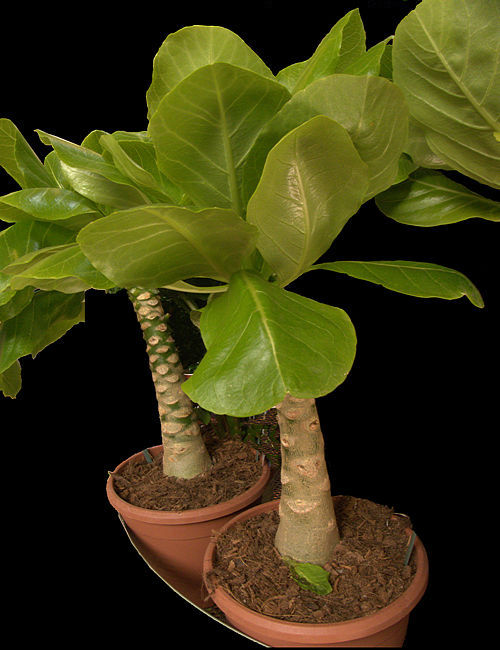Campanulaceae Jussieu 1789The is a family 70 genera and 2000 species of flowering herbs, shrubs and small trees. The family is distributed worldwide, although most of the species are in the Northern hemisphere. Many of those in the Southern hemisphere are in South Africa. The family Lobeliaceae is generally included in the Campanulaceae.
|
Brighamia Gray 1867 |

Brighamia insignis has thickened succulent stems bearing rosettes of large, thin oval leaves. The grey bark is patterned with leaf scars. The inflorescence is a cluster of white bells. The natural hawk moth pollinator has become extinct so reproduction of the remaining plants on sea cliffs is almost impossible, except that it is reportedly being managed by human intervention. As the plants usually die after flowering, natural survival of the species outside botanic gardens is problematic.
|
  Families of Succulent Plants Families of Succulent Plants 
|
|
CampanulaceaeBell Flower Family |
Search this site
 |
|
|
|
| Succulent Plant Search EngineBotanical BookmarksBotanical GlossarySITEMAPEmail: webmaster |


